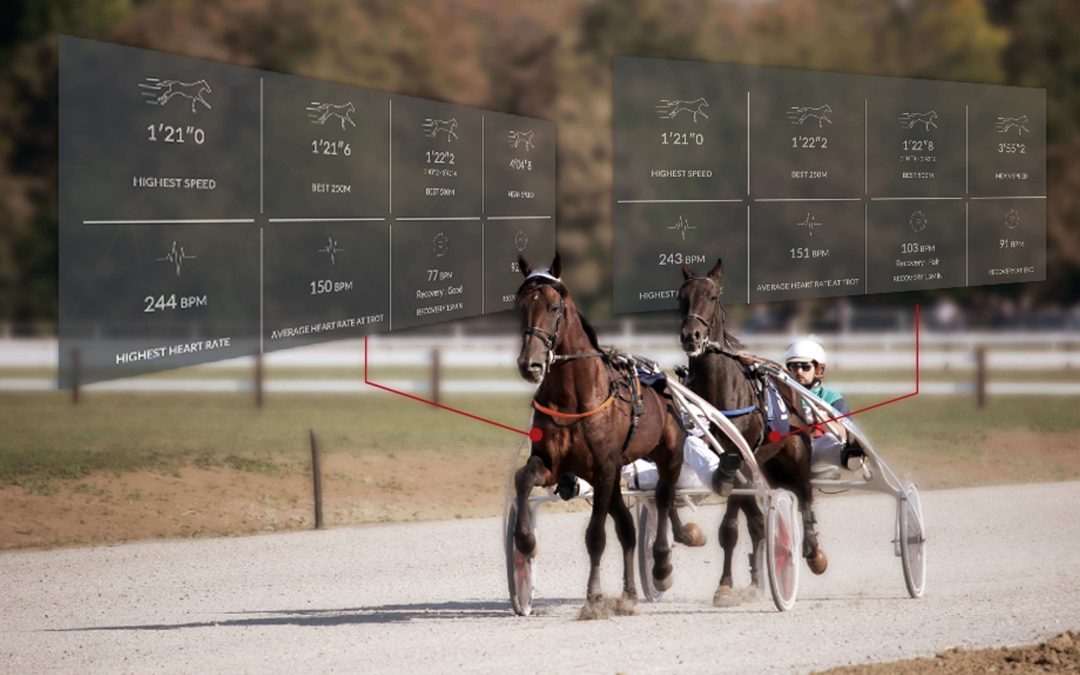Interval training is a sports training method with different cycles of exercises and includes a work phase followed by a recovery phase. This type of session, specific to the training of Standardbreds, can be analyzed using a heart rate monitor.
This article aims to introduce the methods for analyzing an Interval Training session, i.e. a high-intensity interval training.
Effort physiology: a little reminder of the energy metabolisms
There are three mechanisms that contribute to the energy production process:
The aerobic pathway: the body uses oxygen in the body to break down fat and produce energy. This process is slow to set up and the amount of energy delivered is limited by the amount of oxygen that can be assimilated. This depends on the maximum lung capacity and the maximum heart rate: once reached, the volume of oxygen brought to the muscles can hardly be increased.
The anaerobic alactic pathway: this energy pathway does not require oxygen and does not produce lactic acid. It uses the ATP (adenosine triphosphate) contained in the muscle to produce energy. However, the supply is limited: this pathway is exhausted very quickly.
The anaerobic lactic pathway: this pathway produces energy by breaking down muscle glycogen or blood glucose without using oxygen. Glycogen, unlike fat, is in limited quantity in the body, its degradation is rapid and produces more energy. However, this process produces a waste product: lactic acid. If there is not enough oxygen in the blood to eliminate it, it accumulates in the muscles, degrades the quality of contraction and can cause pain: the effort must be limited in time.
Why use data to monitor training?
The interests of tracking training using objective measurements are multiple:
Measuring the horse’s recovery during training – Recovery is a reference indicator of fitness in the athlete horse. Indeed, the better the recovery, the better the fitness. Four key parameters can then be analyzed: maximum heart rate, rapid recovery after exercise, recovery after 15 mins, and the evolution of the heart rate curve analyzed in parallel with the speed.
Evaluate the horse’s energy consumption – Conducting a standardized test during a high-intensity training session allows for lactic acid measurement and maximum heart rate. Once performed, the horse’s energy expenditure during exercise is determined using: HRmax, V4 and FC4, V2 and FC2. These precision data provide a complement to the trainer. Indeed, following this test, the knowledge of the different parameters mentioned allows him to evaluate the energy expenditure of his horses during a HIT session with the objective measurement of the heart rate.

- Maintain accurate longitudinal tracking – Collecting data centrally on a single platform promotes longitudinal tracking. Baseline data is identifiable: when a horse is in shape and performing well, the data collected at that time is a benchmark to reach before each major event.
- Reduce the risk of overtraining – With accurate and quantified tracking, the risk of overtraining is significantly reduced. Indeed, the workload and intensity of work are controlled and adapted to each horse.
- Provide the trainer with additional support – By confronting his feelings with objective data, he reduces the doubt and the risks associated with uncertainty.
An Interval Training session analyzed with EQUIMETRE data
Interval Training is specific to the Standardbreds’ training. It aims to improve anaerobic capacities. By asking the horse to repeat short and intense efforts, he has to use the anaerobic pathway (alactic or lactic) to produce the necessary energy. This results in an increase in his resistance to intense effort, and therefore his fitness. A session is generally composed of :
- A warm-up
- A sequence of x fairly fast straight lines
- A recovery at a pace of about 1 to 5 minutes between each level
- An active recovery at the end of the workout
The first step is to analyze the key parameters of the training. This overall summary shows the key data that allows you to see at a glance how the horse performed during the training.

The maximum speed measured as well as the best time over 500m are given. This global summary provides the key figures about the horse’s heart rate: maximum heart rate during the effort and heart rates after the effort and 15 minutes after it. Our algorithms qualify the heart rate after exercise. It can be Very Bad, Bad, Normal, Good and Excellent.
The maximum heart rate is unique to each horse and does not demonstrate training performance. However, this indicator is very useful to evaluate the different effort zones during training.
The average trotting heart rate is reference data: it changes according to the type of training, but if a major difference emerges between several interval training sessions, an underlying problem may exist.
The other data allow the evaluation of the horse’s speed abilities, according to the instructions that have been given.

Then, it is interesting to look at the evolution grid which indicates the horse’s cardiac system utilization according to the gait and the beats per minute. This grid is divided into 5 sections, from the most moderate to the most “hard” for the horse. For each level, the time spent on it is specified as well as the percentage of the training time the horse remained at that stage.
From this example, we can conclude that the horse worked 3’10 in the anaerobic phase, and 15’57 in the endurance phase, which is the phase of developing aerobic capacity. For reference, the Prix d’Amérique race in France covers 2700 meters and was won at a pace of 1’10″8 in 2021.
It is then important to analyze the heart rate and speed curves in order to evaluate the recovery and fitness level of the horse.
The following example shows 4 straight 1000m steps with recovery phases of about 1’30 between each step. Here are the speeds and heart rates recorded during the intense and recovery phases of each stage. The most important parameter to evaluate with these curves is the recovery capacity.
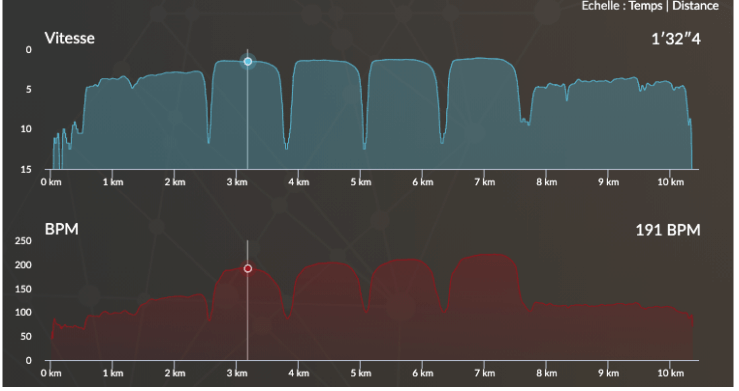
Stage 1 speed
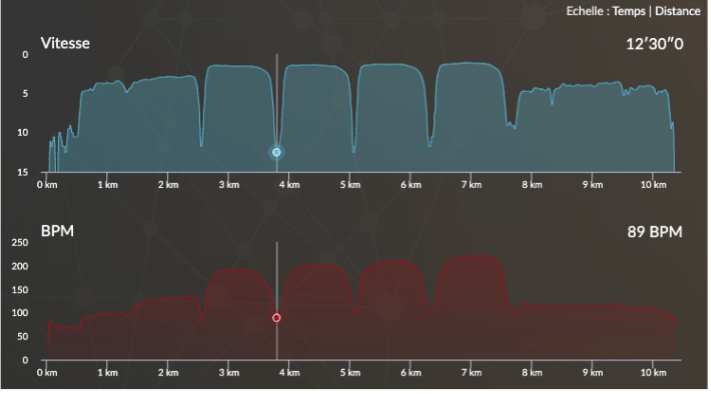
Stage 1 recovery

Stage 2 speed

Stage 2 recovery
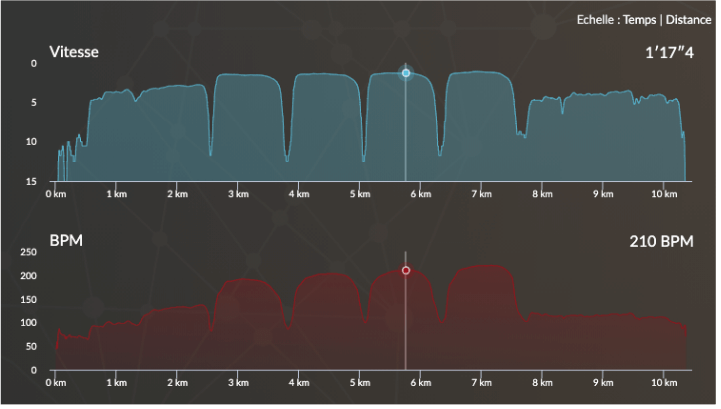
Stage 3 speed

Stage 3 recovery

Stage 4 speed

Stage 4 recovery
On average, this horse has a post-interval heart rate of 100 BPM. This indicates a good cardiovascular system. Indeed, recovery can be qualified as normal when the heart rate measured between the stages goes back below 110 BPM. We can conclude that this horse has the required fitness to race.

Now let’s look at another horse.
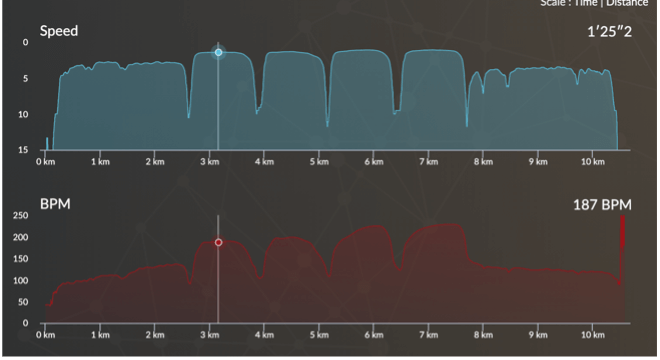
Stage 1 speed
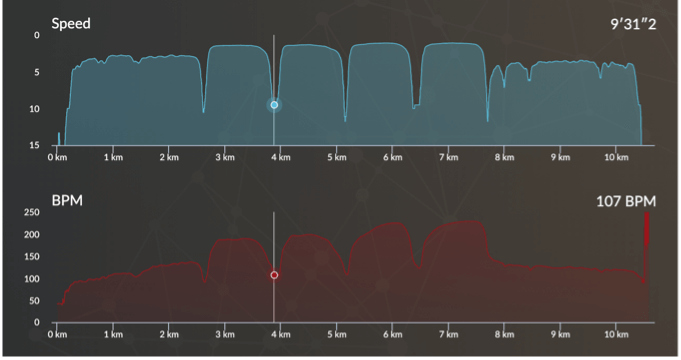
Stage 1 recovery
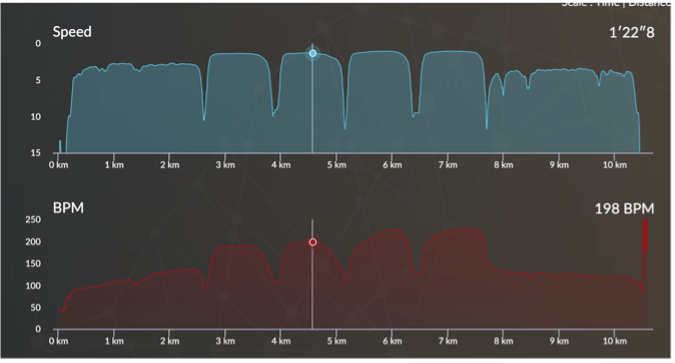
Stage 2 speed
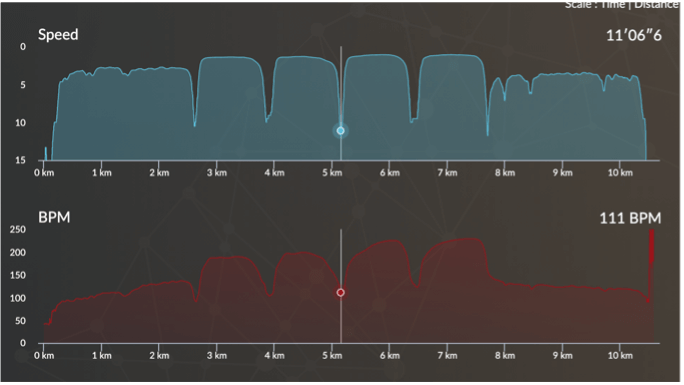
Stage 2 recovery
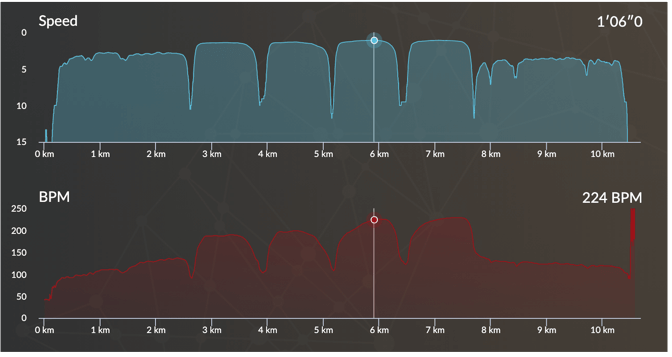
Stage 3 speed
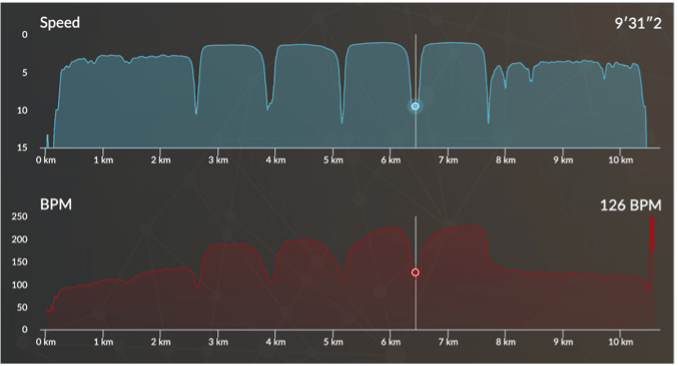
Stage 3 recovery
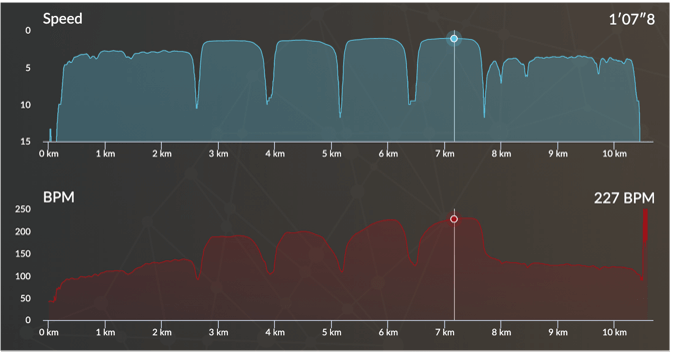
Stage 4 speed
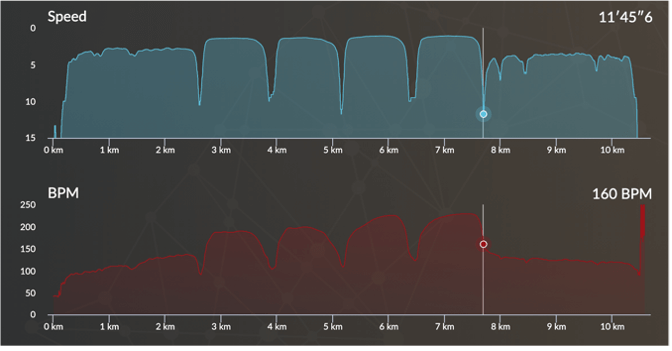
Stage 4 recovery
On average, this horse has a post-interval heart rate of 126 BPM. Unlike the first example, this horse is not in good enough condition to race. In fact, there is a clear increase in the post-interval heart rate as the session progresses, reaching 160 BPM after the effort.

Keywords: interval training racehorses, standardbreds training, horse data science, recovery and fitness, energy production

